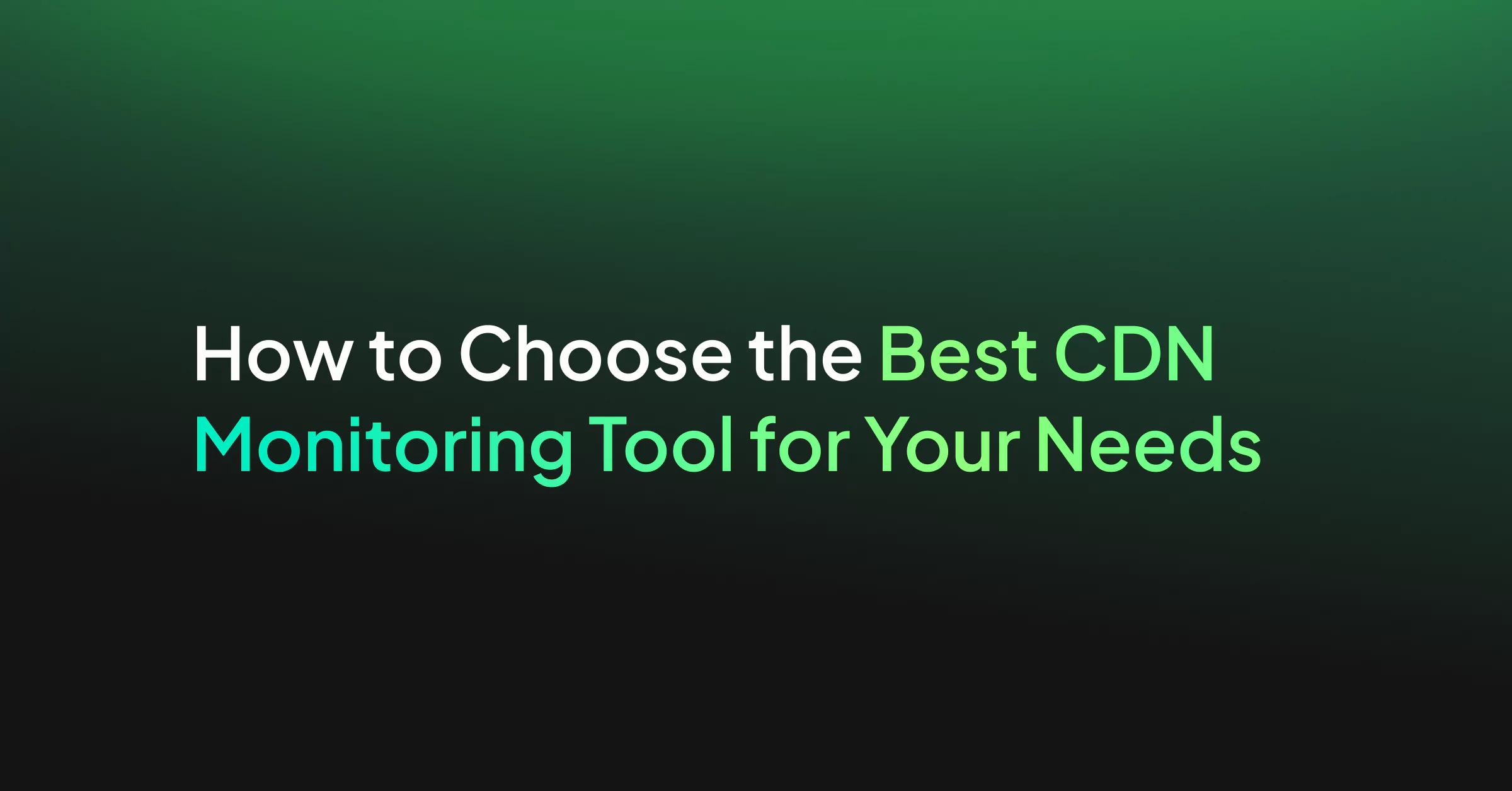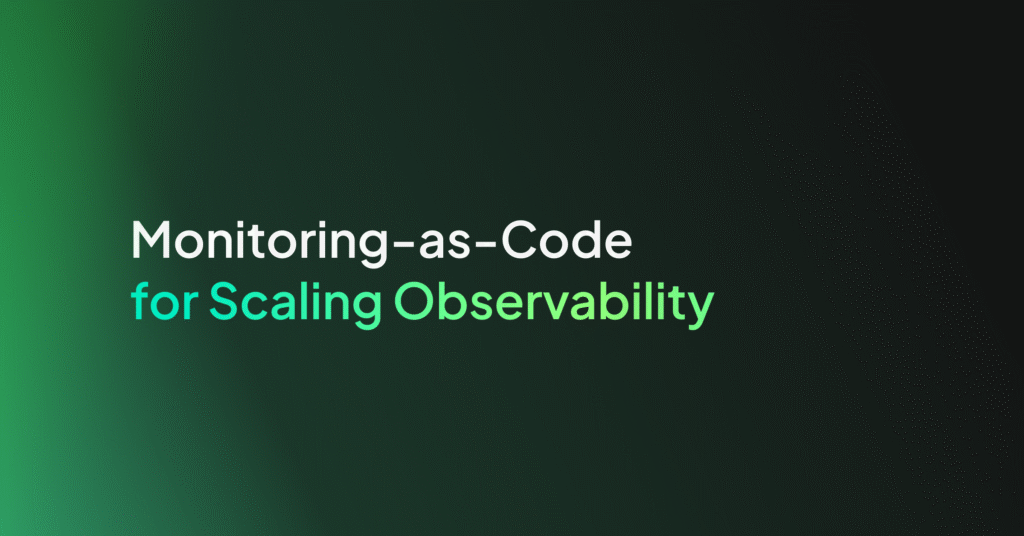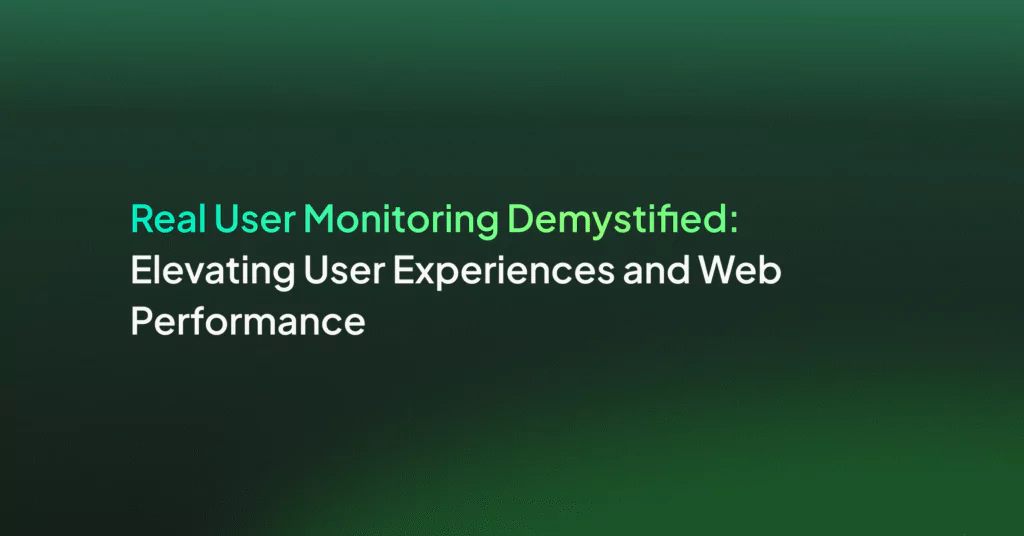How to Choose the Best CDN Monitoring Tool for Your Needs

Rich content like videos and graphics used to cause network congestion and long load times when all the content was stored on a centrally located server. Fortunately, Content Delivery Networks (CDNs) monitoring tools came to the rescue in the late 1990s, letting users load rich content from a location geographically closer to them and reducing load times by distributing a cached version of content across servers worldwide.
And since rich content is so widely used, CDNs have also become a critical component of IT architecture. Provided by third-party companies like Fastly, CloudFlare, and Akamai, CDNs allow logs to be sent to and monitored, with the help of strong full-stack observability platforms like Coralgoix, ensuring high performance standards and minimizing outages.
This article will discuss what to look for in a CDN monitoring tool based on attributes users need to be monitoring.
What your CDN monitoring tool needs to measure
Before choosing a CDN monitoring tool, users should determine what they need to measure. Find a monitoring tool to both analyze your CDN logs and follow your specific performance indicators. Consider tracking the following metrics:
- CDN latency monitoring
Latency measures how long website pages take to load. Page speed is a critical measurement since latency directly impacts performance metrics like conversion rate. The higher the latency, the more likely a website with low performance could see a drop in conversion rate.
CDNs are meant to reduce latency but should also meet service level agreements (SLAs). Further, monitoring both your source and edge servers for latency will help isolate any problems and help you identify whether the issue is with your CDN or software?
You can measure latency across your website by graphing latency metrics. For example, Coralogix can ingest CDN logs from various providers and convert logs to metrics for visualization. Coralogix also ingests logs from various sources and immediately analyzes them using its proprietary Streama technology. So IT teams can know at a glance when the latency is higher than usual and also spot where the cause is.
- Security monitoring
CDN logs come complete with entries for every request issued to your website. Log observability tools can either analyze these logs directly or convert these logs to metrics that can be analyzed for security issues. These logs help IT teams find what nefarious actors did and where they are located.
Due to the high volume of logs used to monitor CDNs, most monitoring tools take significant time to index and assess the data. Analysis of multiple log events is needed to detect anomalies like security breaches. Time is of the essence when detecting and handling threats. Reducing the time it takes to produce the analysis and signal an alert is crucial for limiting the scope of security breaches. With Coralogix’s Streama technology, contextual alerting in real-time occurs in the stream without indexing latency or mapping dependencies. This allows your IT teams to neutralize threats faster.
- Performance monitoring
CDN monitoring tools should determine performance changes quickly. The right monitoring tool allows you to look back at archived logs and analyze improvements in performance over time. Coralogix’s Archive Query feature allows you to query your logs directly from your S3 archive seamlessly, helping you store information on performance issues and more. CDNs will also export logs to third-party observability services to be converted to metrics for analysis.
Providing your own performance monitoring, independently of the CDN itself, allows IT teams to hold CDN providers accountable, including when there’s a service-level agreement (SLA) breach. Performance metrics can be leveraged to ensure your website gets the best possible service.
Furthermore, most full-stack observability tools are cost-prohibitive since they charge for the amount of stored data. Storing the logs necessary for performance monitoring would greatly increase the cost. With Coralogix, the pricing model is based on analysis, not size. We are able to provide performance monitoring within your budget and business needs.

How to identify the problem
If a website becomes unavailable or faces a security breach, IT teams should be notified immediately in order to effectively handle the issue. Tools used for CDN monitoring should include an alerting system when metrics do not meet standards.
Alerts are typically split into two categories: static and dynamic. Static alerts are helpful if a threshold is known and unchanging. For example, you may use a static alert to notify IT teams if the latency of a webpage is higher than some number of seconds. Dynamic alerts are helpful when alerts need to be set up comparing changing values. For example, when users want to alert when the latency is higher than usual, a dynamic alert should be used.
Your monitoring solution will ideally have both types of alerting so IT teams can make the most of CDN logs and quickly respond to errors and user experience changes. Coralogix provides both dynamic and static alerting that are customizable for your needs. Choose from a variety of dynamic alerts that are built in and easy to set up. These include time-relative alerts that are especially useful for detecting abnormal behaviors like an increase in errors from your CDN.
Beware of hidden CDN costs
CDN logs are notoriously large since every request generates a log. Most observability solutions will charge based on the volume of logs ingested. Since CDN logs tend to have large volumes, choose a full stack observability solution that is unique in their pricing model. Coralogix will not charge you for the amount of logs you store, allowing for a complete observability solution for your CDN logs.
Wrapping up
CDNs allow high-performance websites to deliver rich content to users by placing cached content across multiple servers worldwide. Monitoring these servers is critical to understanding whether your website is performing as it should.
Choose a monitoring tool that identifies specific issues such as latency, load-balancing and availability and security, as well as analyze archived logs, alert IT when an issue arises, and keep costs low despite extensive volume log data.




